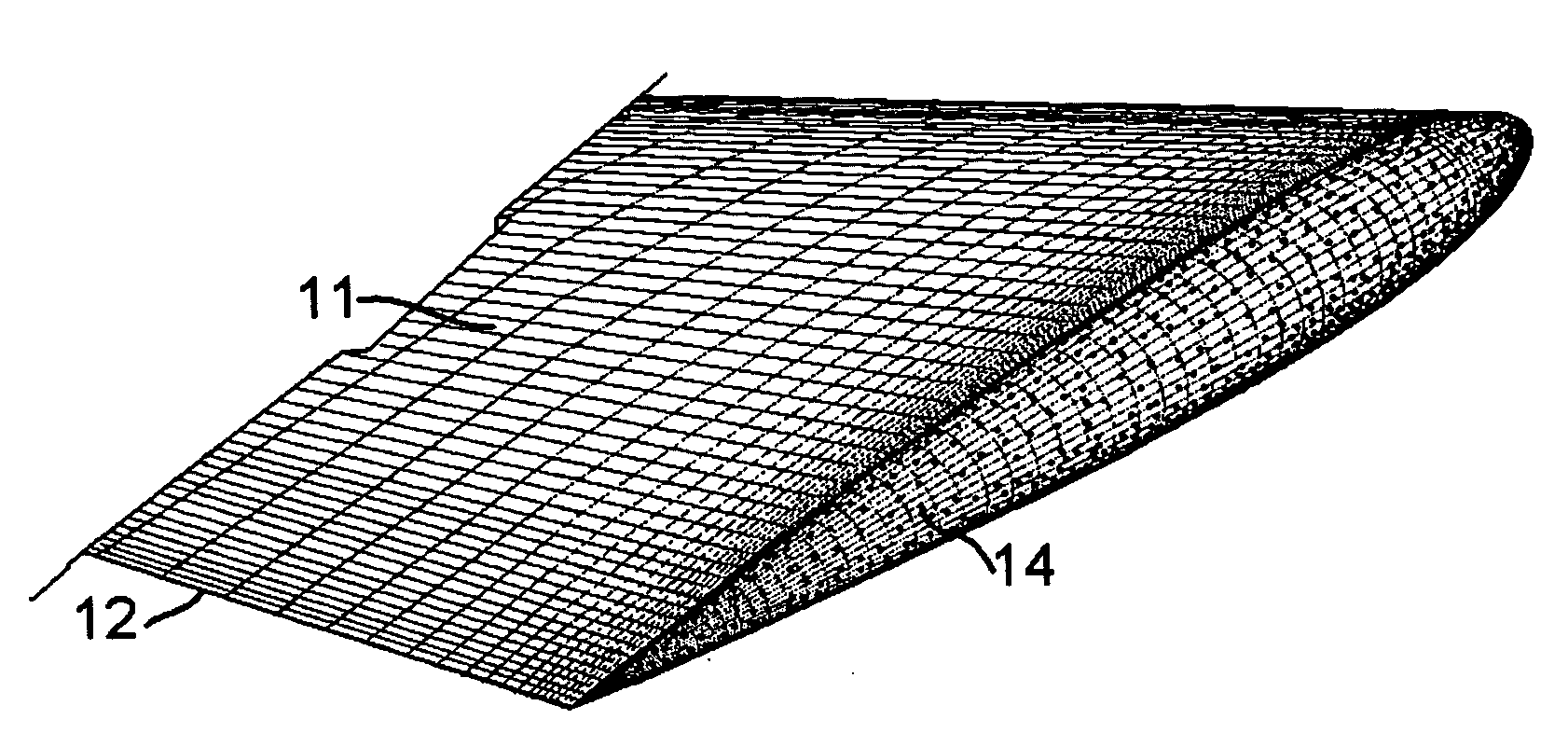Triboelectric treatment of wing and blade surfaces to reduce wake and BVI/HSS noise
- Summary
- Abstract
- Description
- Claims
- Application Information
AI Technical Summary
Benefits of technology
Problems solved by technology
Method used
Image
Examples
Embodiment Construction
[0028]Triboelectric charging of airflow around aircraft wings and rotorcraft blades has the major advantage of being safe compared to electrical HV sources. Other HV sources cannot be implemented on open surfaces without ruling out electrical flashes which may lead to hazardous situations. Experiments were conducted using a three-rotor configuration with a total sweep of 1.5 meters and a maximum tip speed of approximately 0.1 Mach. The straight rotor blades had a chord length of 54 mm and they were of uniform cross section. The airfoil section somewhat resembled NACA 0016. The airfoil sections were constructed by uniformly rolling a 2 mm thick aluminum sheet to a diameter of 3.8 meters. Thereafter, straight strips were cut and two symmetrical halves for each rotor blade airfoil were profiled with the use of hand press and hand tools; each pair of symmetrical halves for each rotor blade was joined by argon welding to get a completed rotor. Hand filing was employed to finish the airfo...
PUM
 Login to View More
Login to View More Abstract
Description
Claims
Application Information
 Login to View More
Login to View More - R&D
- Intellectual Property
- Life Sciences
- Materials
- Tech Scout
- Unparalleled Data Quality
- Higher Quality Content
- 60% Fewer Hallucinations
Browse by: Latest US Patents, China's latest patents, Technical Efficacy Thesaurus, Application Domain, Technology Topic, Popular Technical Reports.
© 2025 PatSnap. All rights reserved.Legal|Privacy policy|Modern Slavery Act Transparency Statement|Sitemap|About US| Contact US: help@patsnap.com



